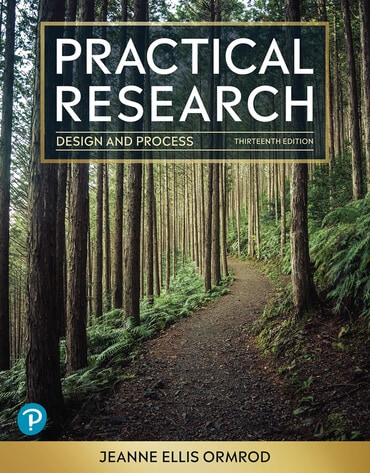
Common practices in open science

In recent years, researchers have increasingly advocated for open science (some scholars capitalize it as Open Science). The open science movement consists of several practices that make research reports more transparent, such that details regarding methodologies, collected data, and data analysis procedures are fully disclosed and open to public inspection and critique.
Here are five common ways in which researchers can enhance the transparency — and ultimately also the credibility — of their research projects. These points are described in greater depth in my book Practical Research: Design and Process, 13th Edition:
- Preregistration of a study: Researchers post an online description of what they will do in an upcoming research project. Among other things, such a description usually includes the overarching research question(s) to be addressed, specific hypotheses to be tested, specific methods to be used to collect data, and specific statistical procedures and other strategies to be used in analyzing the data. (See Chapter 5.)
- Results-blind reviewing: Before a project is conducted, outside reviewers examine a preregistered research proposal to determine the apparent soundness of a researcher’s main question(s), rationale, a priori hypotheses, study design, and planned data-collection and data-analysis strategies. (See Chapter 13.)
- Registered report: When a proposed project has been both (a) preregistered and (b) results-blind reviewed, an editor of an academic journal commits to publishing the final research report in that journal — regardless of whether the results are statistically significant or in some other way especially noteworthy — as long as the project has actually been carried out as originally proposed or else modified in reasonable, well-documented ways. (Again, see Chapter 13.)
- Open access to specific data collection and analysis procedures: Researchers make the details of their data-collection and data-analysis strategies readily available to interested scholars; for example, they might share the questionnaires administered, specific statistical procedures conducted, or particular coding schemes used to find patterns in participants’ interview responses. (Again, see Chapter 13.)
- Open access to raw data: Especially when qualitative data has been collected (e.g. when people have been interviewed or members of a particular sociocultural group have been carefully observed as they’ve gone about their daily activities), the actual verbal and/or nonverbal behaviors might be presented in an appendix or supplemental materials. There’s an important caveat here: A researcher can give other people open access to their raw data only when either (a) responses remain strictly anonymous or (b) participants have given explicit written permission for their identities to be disclosed. (Once again see Chapter 13; also, see the section “Ensuring Participants’ Rights and Well-Being” in Chapter 4.)
When striving for transparency, researchers don’t necessarily do all of these things for a particular research project. For example, when a researcher is building on another researcher’s work and uses a questionnaire that the other researcher has created, publishing the questionnaire might violate the other researcher’s intellectual property rights. And preregistration of a project isn’t always logistically feasible. For instance, many action research projects may be intentionally ill-defined at the very beginning, at least in part because initial data collection may lead to new questions to be addressed and further data collection may be necessary.
The bottom line here is this: I recommend open science practices when they can enhance the credibility of a research project without jeopardizing either (a) the privacy and well-being of the people being studied in the project or (b) the degree to which the project can thoroughly address the questions that underlie and drive the project.
About the author

Jeanne Ellis Ormrod, Author and Educator
Jeanne Ellis Ormrod is an educational psychologist with specializations in learning, cognition, and child development. She received a PhD and an MS in educational psychology at The Pennsylvania State University and an AB in psychology from Brown University. For many years, she was a faculty member at the University of Northern Colorado, where she taught courses in learning and cognition, educational psychology, measurement, and research methods. She is currently Professor Emerita of Psychological Sciences at UNC.




